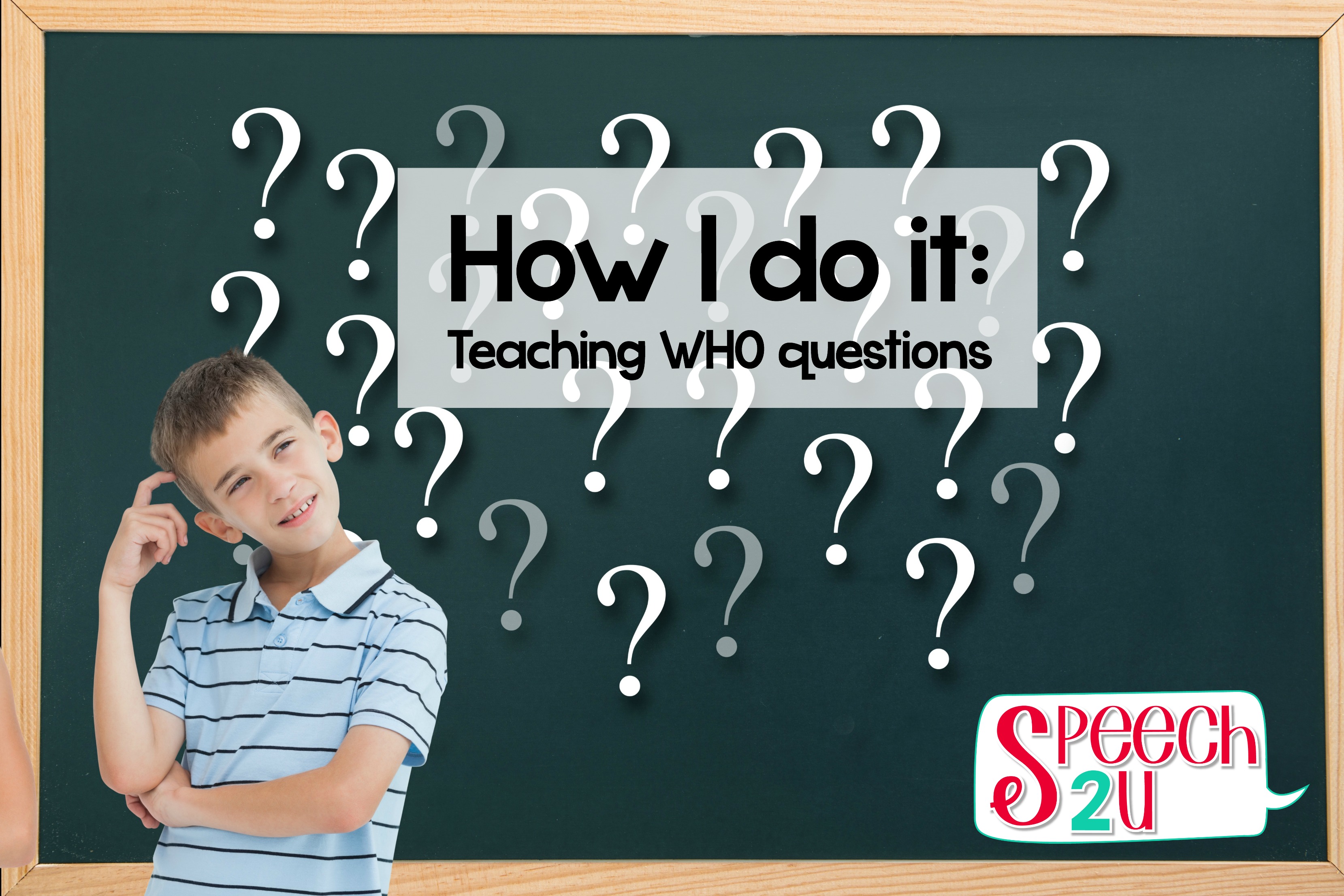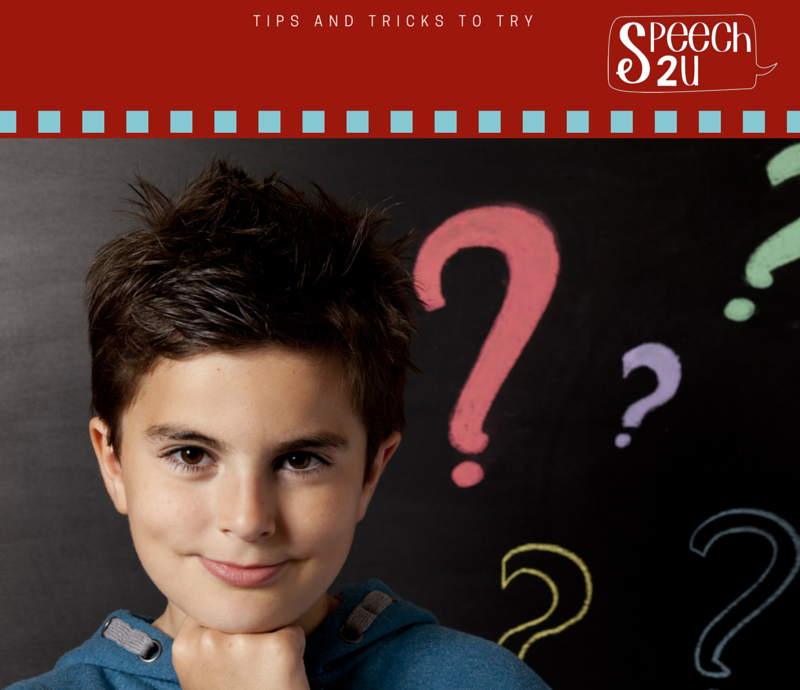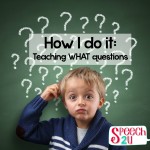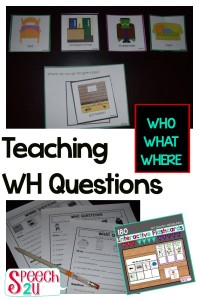I struggle with writing goals for teaching WHO questions because I feel like most of my materials are focused on teaching community helpers/occupations. Sometimes it doesn’t feel as functional to be talking about mechanics with 4 year olds. Still, it’s important for children to be able to answer WHO questions to talk about who is there, who did something and who they will see.

I’m breaking down how I teach WH questions. If you are new to this series, you might want to check out my previous posts:
Labeling WHO questions
When starting to teach WHO questions, I usually have them name familiar people. If I can get the family to send some photos, I will work on family member names. Other familiar people to teach include:
- Relatives
- Teachers/school classmates
- Super Heroes/Princesses/TV video characters
Teaching WHO questions with stickers

Stickers are another fun way to work on naming and answering WHO questions. You can have them choose what sticker they want and then ask, “Who is it?” You can also have them hide the stickers around the room, ask them who they are going to hide. After you are done you can ask them WHO questions related to the location. (Ex. Who is on the door?).
After my client is able to answer WHO questions by labeling the person/action figure, it’s time to move on. The functional goal is for the student to answer who SAID or DID something within their environment. Here are some other WHO questions to teach:
NAMING WHO QUESTIONS
- Who is doing (action)? Can the student name who is doing an action within a picture scene? Who is kicking the ball? Have them answer by stating, “the girl” or “the boy.”You could also work on this within a favorite TV show or book.
- Who is doing (action) without picture? Can the student name who is doing a specific action within their classroom or on the playground? (Ex. Who is on the slide right now? Who is the line leader today?)
- Who is in (location) Can the student name a person who is in a specific location? (Ex. Who is under the table?)
Teaching WHO questions with custom cards.
Have you ever made custom cards for your clients? It can be a lot of work, but it’s really motivating for kids. Here’s how you do it. Come up with a list of 5-10 actions. Ask the parents to take pictures of themselves and siblings doing the actions. Or ask your colleagues to help you out and create your own school based picture cards. Do you think you could get your principal to participate? Then you can set out three pictures and ask questions such as, “Who is eating?” Here are the actions I ask for:
- Run, sit, sleep, eat, drink, jump, read, watch TV, clap, talk
Putting it all together
I might take a few weeks to introduce a new question form-practicing it in a “block” format, but it’s important to include random practice as well for generalization. When my clients are answering WHO questions with a person more consistently, I will start working on a variety of WH questions within the session.
Interested in learning more? Check out my Who, What and Where program for additional teaching ideas and resources.
QUESTION: Do you write your goals to target individual WH questions (ex. will answer WHO questions with 90% accuracy) or do you write your goals for answering all WH questions? Leave your answer in the comments field for a chance to win your choice of one of my WH question packets.





I have written my goals both way. However, I usually just make the objective for all WH questions because I only have space for 5 objectives on the IEP goal page. I usually need space for other objectives. Thanks for the great post. I have been thinking about how to tackle who questions more appropriately.
Makes sense since you would need to work on other skills within the year. Some times I write a goal, but then break it down in therapy too.
It depends on the student. For little ones or those with more significant impairments, I break it down. For older students who understand the concepts of who refers to people, what refers to things, animals, and actions, etc. I do a more comprehensive goal.
I do that as well, depending on what the student needs.
I usually write them split up into individual goals.
For goal writing I have started to use ‘wh’ goals that correspond to Blank’s Levels of questioning. I also love using the Black Sheep Program for teaching ‘wh’ concepts.
That’s a great idea too! Here’s a link if people want to see what you are talking about: http://askaspeechie.com.au/wp-content/uploads/2015/04/Blank-handout.pdf. I’m not familiar with the black sheep program so I am going to look that up now!
I’m a grad student still, so I am not usually the one writing the goals, unfortunately! I have only ever seen goals targeting all or most WH questions within one, but I much prefer the idea of separating them! Easier to progress monitor and more individualized. When I get out in the field, I’m sure it will depend on the student/setting though
Thanks for this post! I really love your ideas for making the instruction *functional*.
Thanks for stopping by! I’ve written a long term goal for WH questions some times and then short term goals for individual WH questions. Good luck in grad school!
Thanks for stopping by-I agree that sometimes we do have to look at what the school or clinic is using for goals and write them based on the feedback that we get from them as well!